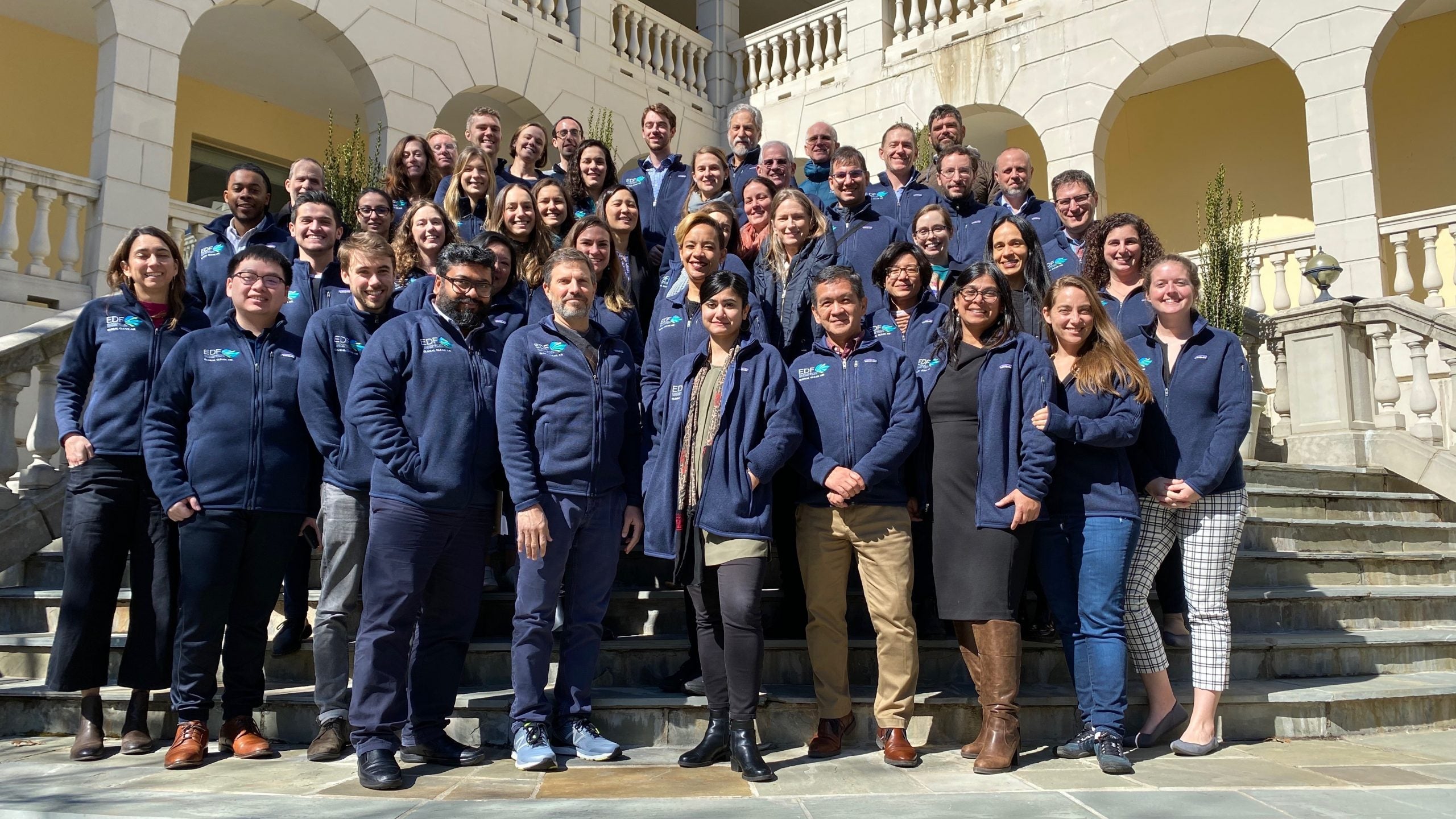About EDF’s Global Clean Air Initiative
With this online community, you’ll learn about how innovative technologies, scientific research and policies are supporting communities, governments and private sector leaders around the world to deliver cleaner air for all.
As enormous momentum grows within cities to tackle the global air pollution crisis, EDF is driving targeted clean air action by shining a light on air quality at a scale and scope never seen before. With on-the-ground projects in three continents—US, Mexico, UK and China—EDF and our partners are deploying new technologies to pinpoint pollution hotspots, clear the air people breathe and inspire action worldwide.
Under a grant from US Agency for International Development (USAID), EDF and World Resources Institute (WRI) are leading a consortium called Clean Air Catalyst to accelerate clean air solutions in low- and middle-income countries, including India.
EDF is grateful to our many partners of the Global Clean Air Initiative, including: academia, environmental justice organizations, healthcare institutions, local, regional and national government agencies, non-governmental organizations, tech companies, and others.
Environmental Defense Fund (edf.org), a leading international nonprofit organization creates transformational solutions to the most serious environmental problems. EDF links science, economics, law and innovative private-sector partnerships. For more than 50 years we’ve been pioneers, using science and different perspectives to make the environment safer and healthier for us all.
The problem: Around the world, only 1 in 10 people breathe healthy air. Air pollution is now the biggest environmental risk for early death, responsible for as many an estimated 6.7 million premature deaths each year from heart attacks, strokes, diabetes and other respiratory diseases. That’s more than AIDS, tuberculosis and malaria combined.
Our role: As enormous momentum grows within cities to tackle the global air pollution crisis, EDF is driving targeted clean air action by shining a light on air quality at a scale and scope never seen before. With on-the-ground projects in three countries—US, UK and China—EDF and our partners are deploying new technologies to pinpoint pollution hotspots, clear the air people breathe and inspire action worldwide. In Mexico, we partnered with the Mexico City environment ministry and Megalopolis Commission to support the implementation of hyperlocal monitoring in the region.
Our approach: New, cost-effective sensing technologies and data analytics can identify areas of dirty air that a sparse network of traditional monitors might miss, filling in gaps where modeled data isn’t available and painting a more holistic picture of air pollution sources and impacts. We’re focused on ensuring new sensor technology provides tools for policymakers and community groups alike to hold polluters accountable, better understand hotspots and tailor clean air solutions like local clean air zones, regional electrification strategies and national standards to tighten emissions from industrial sources, among others.
Why this matters: The evidence is clear: Breathing dirty air is bad for our health, and these health effects are not distributed equally. In fact, our research shows air pollution can be up to eight times worse on one end of a city block as another. What isn’t always clear is how to tackle this invisible threat to protect public health. While most conventional monitoring systems can provide a general sense of a city’s air quality, they can’t account for air pollution at the neighborhood level, where people experience it. Knowing where pollution is coming from, who’s impacted by it and who’s responsible for it makes for highly actionable information—for communities, governments and companies.
What’s our goal? By 2025, 100 million people live in cities and large urban regions that are on track to meet WHO air quality standards. Key strategies include:
- Prove it is possible to cost-effectively map local air pollution sources and health impacts;
- Ensure taking action to reduce air pollution is a political win; and
- Scale best practices for using new sensing technologies to tailor clean air solutions.

Our Partners
We can’t do it alone. EDF is grateful to our many partners of the Global Clean Air Initiative, including: academic researchers, environmental justice organizations, healthcare institutions, local, regional and national government agencies, non-governmental organizations, tech companies, and others.
For example, Google Street View cars equipped with fast response air-quality sensors, we collected millions of data points characterizing air pollution every 100 feet in Oakland, California. We shared the Oakland data through a website and maps, which empowered local community groups, such as the West Oakland Environmental Indicators Project, to advocate for better air quality, build support for, and ultimately co-develop a plan to reduce local pollution under the state’s innovative Community Air Protection Program. We used what we learned in Oakland to initiate similar projects in Houston, Texas, Salt Lake City, and London. Our next step is to share our best practices with cities across the world.
EDF also partnered with Kaiser Permanente to combine our street level pollution data with Kaiser’s electronic health records for more than 40,000 Oakland residents. Our resulting study — the most detailed of its kind to date — shows that differences in traffic-related air pollution are associated with higher rates of heart attacks and deaths from heart disease in the elderly.
In Houston, EDF is proud to be a founding member of One Breath Partnership along with Air Alliance Houston, Environment Texas, Environmental Integrity Project, Public Citizen, and Rice University.
Breathe London was a multi-partner project, with initial funding from C40 cities and The Children’s Investment Fund Foundation and continued funding from The Clean Air Fund, managed by the Greater London Authority and Environmental Defense Fund Europe, a registered charity.
